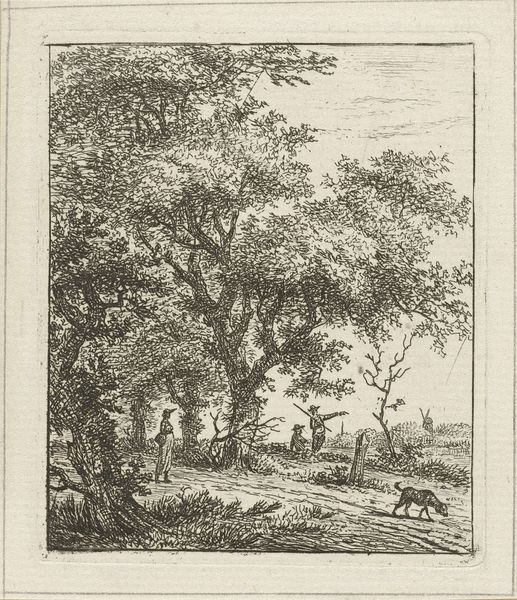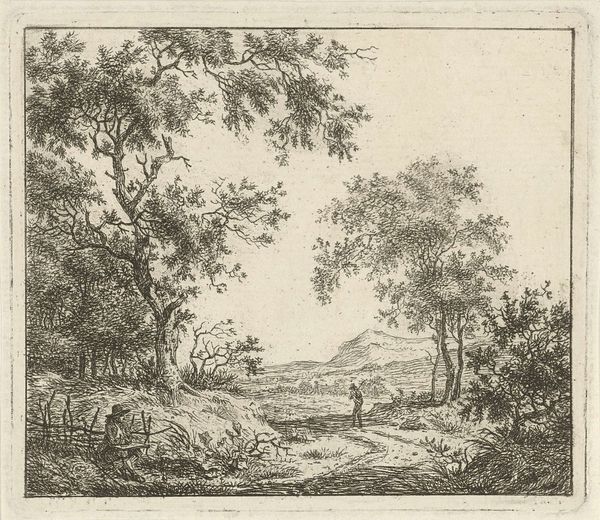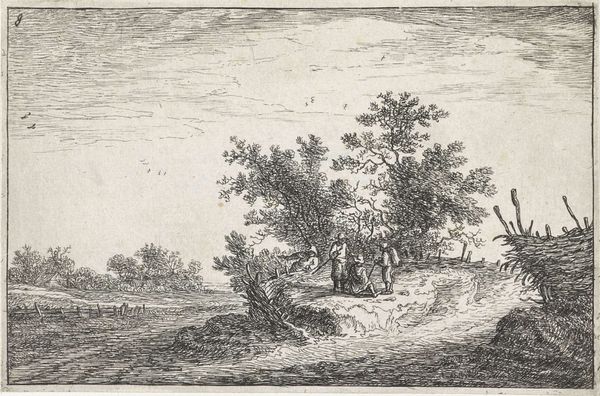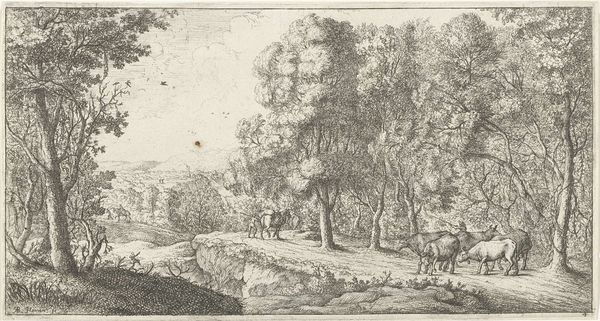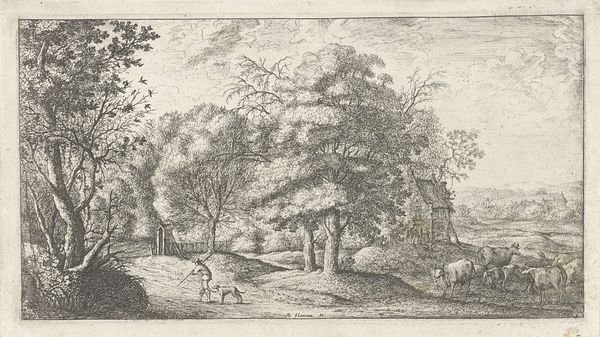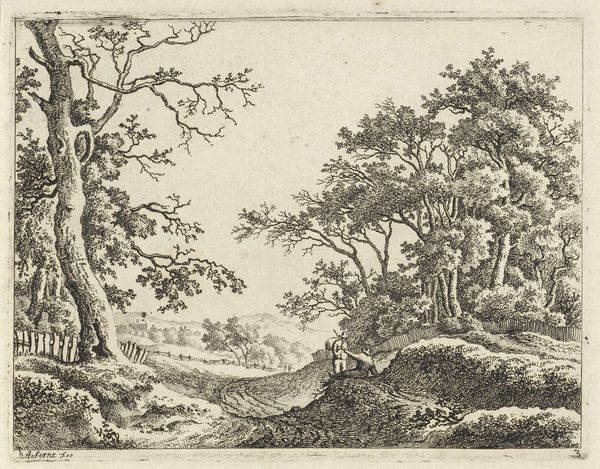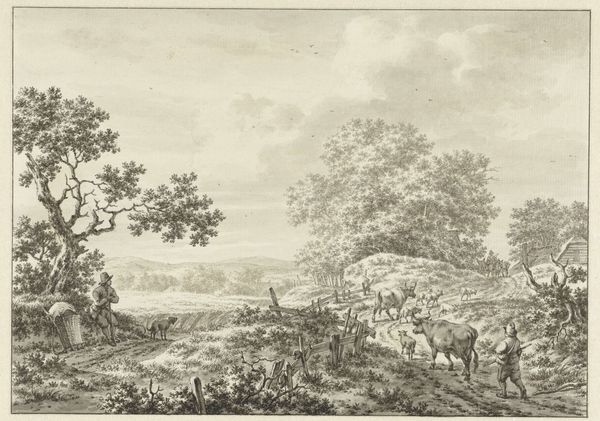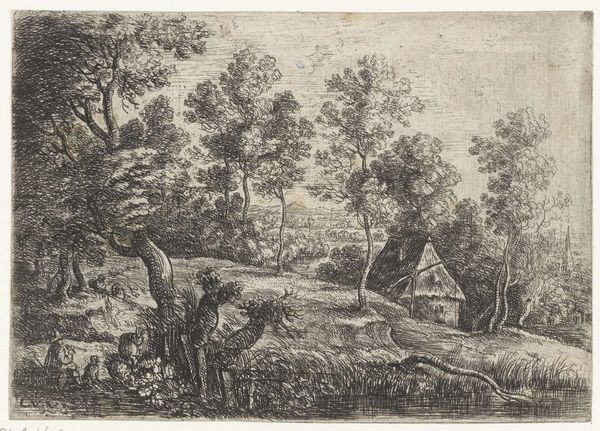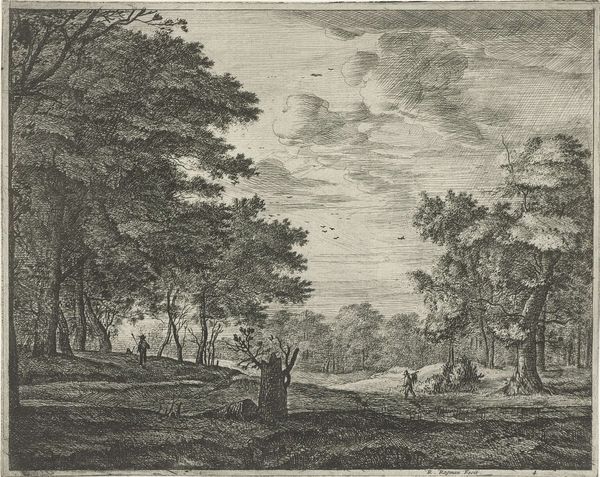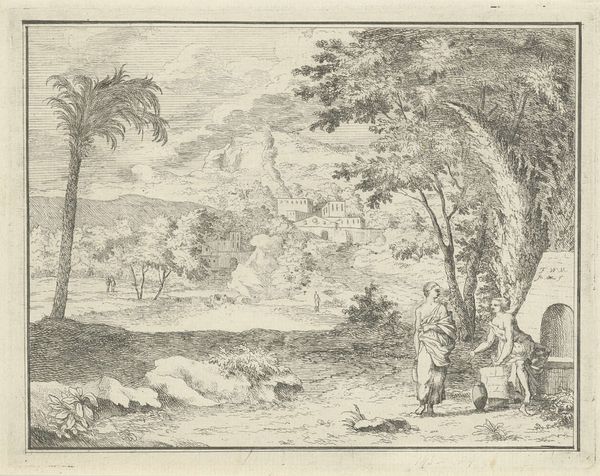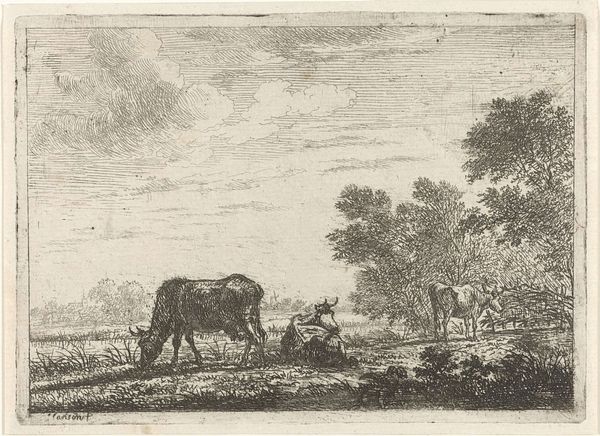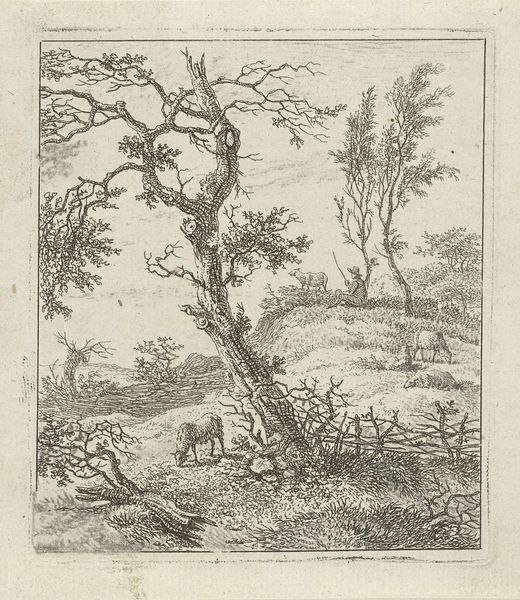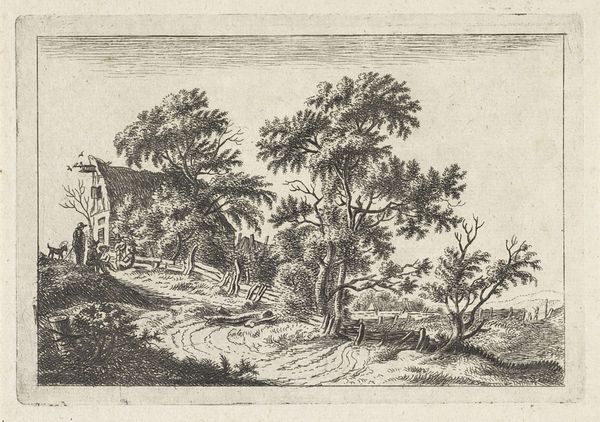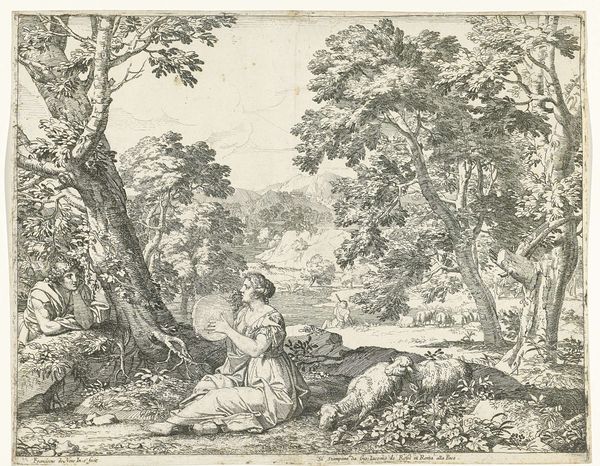
print, engraving
# print
#
landscape
#
genre-painting
#
engraving
Dimensions: height 132 mm, width 192 mm
Copyright: Rijks Museum: Open Domain
Hermanus Fock created this landscape with bull and herdsman sometime between the late 18th and early 19th centuries using etching, a printmaking technique. The matrix of the artwork is a metal plate, likely copper or zinc, into which the design has been bitten by acid. The artist would have first covered the plate with a waxy, acid-resistant ground, then scratched away the lines of the composition, exposing the bare metal. Immersed in acid, these lines would have been etched into the surface. This painstaking process allowed Fock to create a design of great detail, like the densely packed trees and shrubbery. The social context of this work is really one of labor, as rural laborers are seen to be travelling and working in the Dutch countryside. The finished plate would have been inked and printed onto paper, creating multiple impressions of this scene. Think about the labor involved not only in the lives of the herders depicted, but also in the production of the artwork itself. By considering these processes, we can challenge traditional distinctions between fine art and craft and better appreciate the full meaning of Fock's work.
Comments
No comments
Be the first to comment and join the conversation on the ultimate creative platform.
